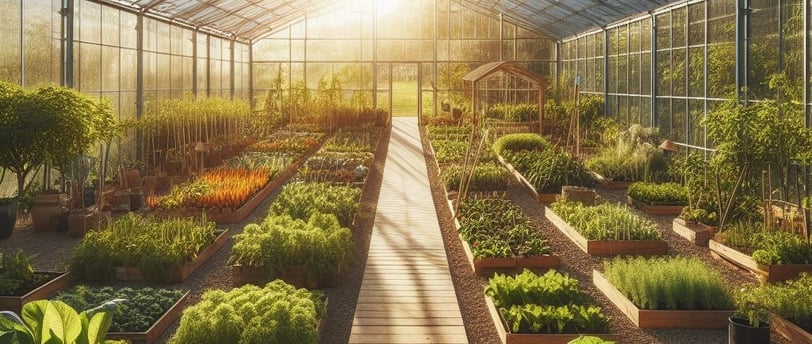The Future of Farming and Greenhouses: Clear Solar Panels Revolutionizing Renewable Energy
4/26/20242 min read


The History of Clear Solar Panels
Clear solar panels, also known as transparent solar panels or see-through solar panels, have emerged as a promising innovation in the field of renewable energy. These panels are designed to harness solar energy while allowing light to pass through, making them an ideal solution for various applications, including farming and greenhouses. Let's delve into the history of clear solar panels and explore why they are considered the future of farming and greenhouses.
Early Development and Challenges
The concept of transparent solar panels first gained attention in the early 2000s. Researchers and scientists recognized the potential of integrating solar cells into everyday objects, such as windows and glass surfaces. However, early attempts faced significant challenges, including low efficiency and limited transparency.
Technological Advancements
Over the years, advancements in materials and technology have led to significant improvements in the efficiency and transparency of solar panels. One breakthrough came with the development of transparent conductive materials, such as indium tin oxide (ITO) and graphene. These materials enabled the creation of solar panels that could transmit light while still generating electricity. Another significant advancement was the use of organic photovoltaic materials, such as perovskite, which have high light absorption capabilities and can be processed into thin, flexible films. These materials opened up new possibilities for integrating solar cells into various surfaces, including transparent ones.
The Future of Farming and Greenhouses
The potential applications of clear solar panels in farming and greenhouses are vast and promising. Here are a few reasons why they are considered the future of these industries: 1. Energy Generation: Clear solar panels can be integrated into greenhouse structures, allowing them to generate electricity while still allowing sunlight to reach the plants. This dual-purpose functionality can significantly reduce energy costs for farmers and greenhouse operators. 2. Optimal Light Transmission: Unlike traditional solar panels, clear solar panels can transmit a higher percentage of light, ensuring that plants receive the optimal amount of sunlight for photosynthesis. This can lead to increased crop yields and improved plant health. 3. Space Efficiency: By utilizing clear solar panels on greenhouse roofs and walls, farmers can maximize the use of available space. This is particularly beneficial in areas with limited land resources, as it allows for more efficient farming practices. 4. Environmental Benefits: Clear solar panels contribute to a greener and more sustainable future by reducing reliance on fossil fuels. By harnessing solar energy, farmers and greenhouse operators can significantly reduce their carbon footprint and contribute to mitigating climate change. In conclusion, clear solar panels have come a long way since their inception, with advancements in technology and materials making them a viable solution for the future of farming and greenhouses. With their ability to generate electricity while allowing light to pass through, these panels offer numerous benefits, including energy efficiency, optimal light transmission, space efficiency, and environmental sustainability. As the world continues to prioritize renewable energy, clear solar panels are poised to revolutionize the way we approach farming and greenhouse operations.
